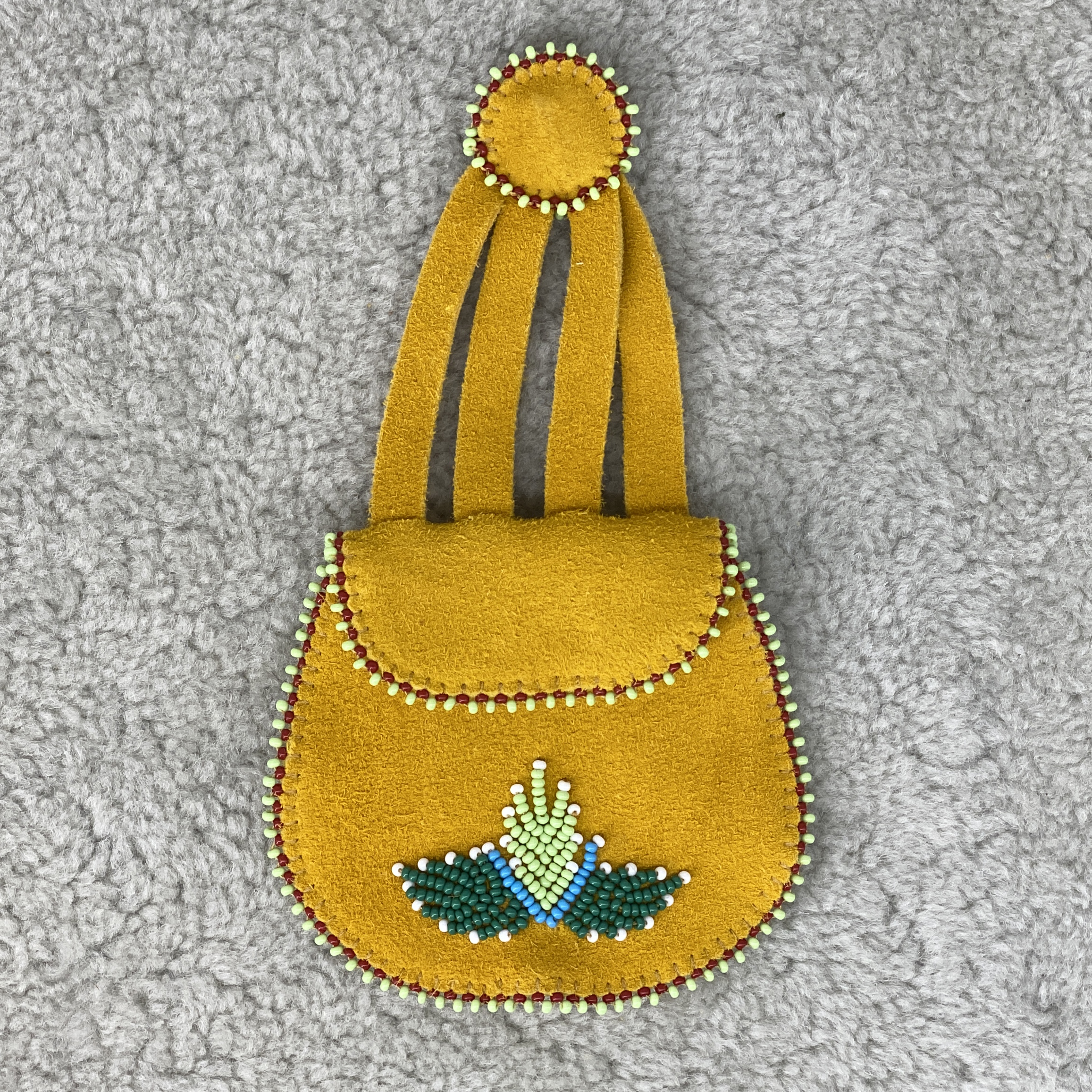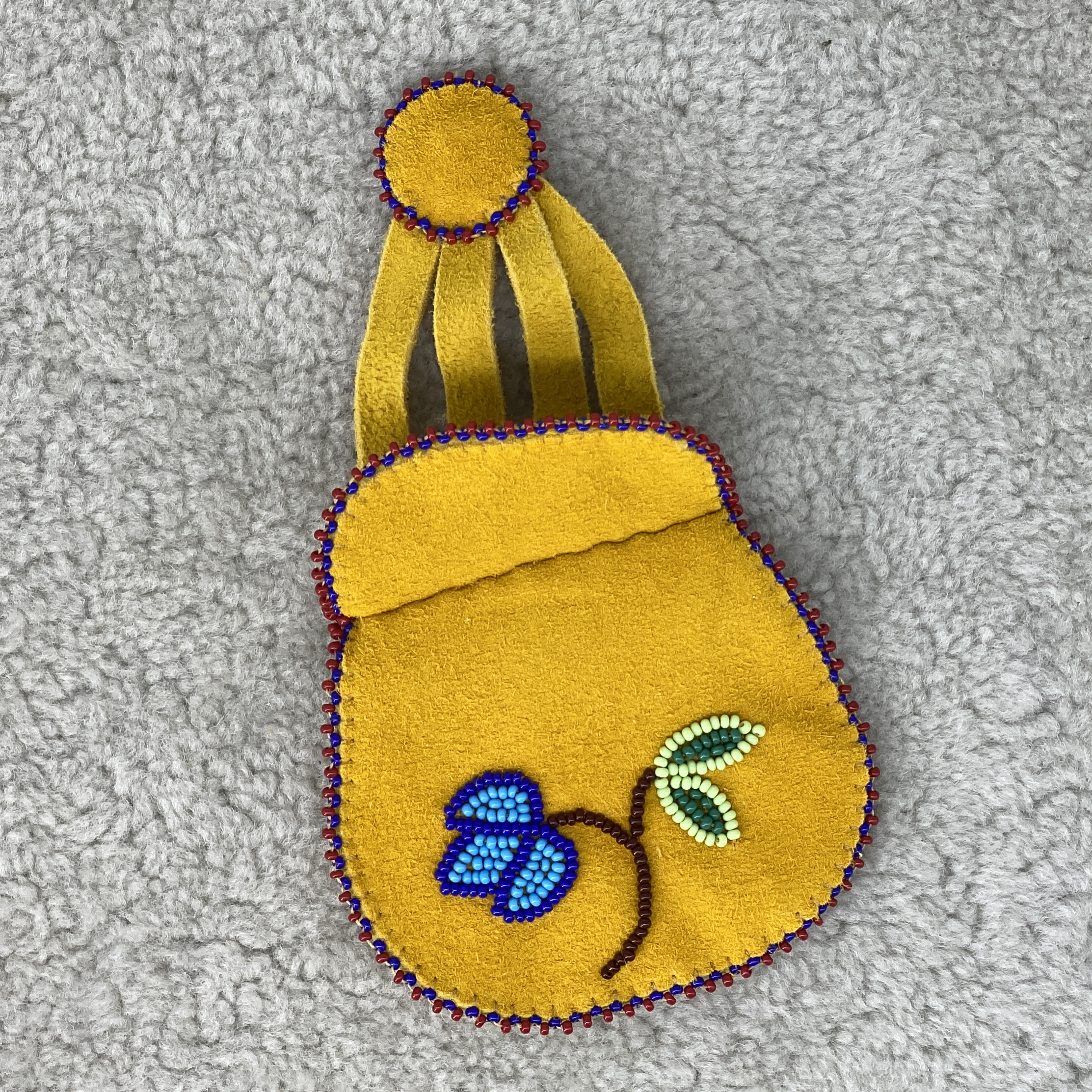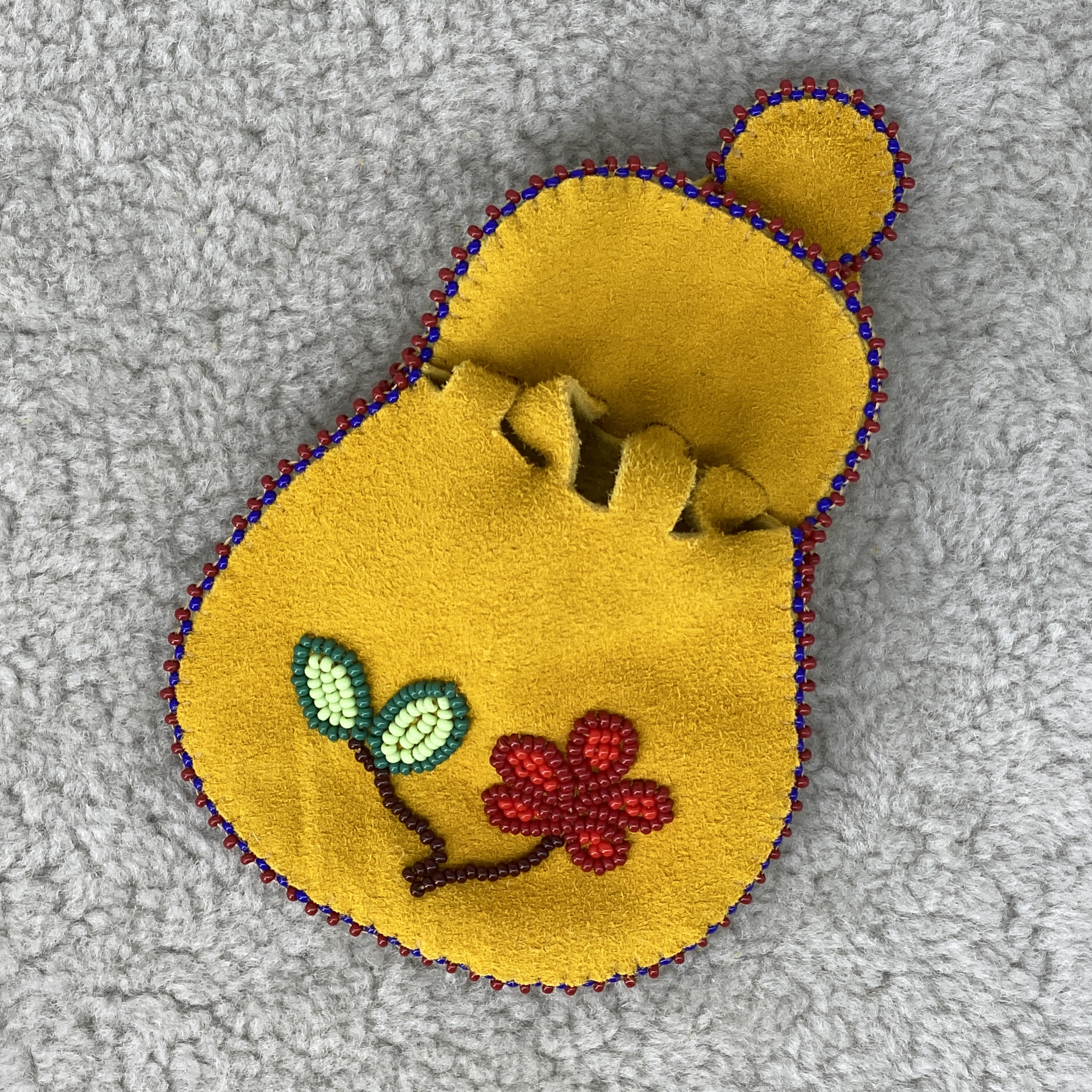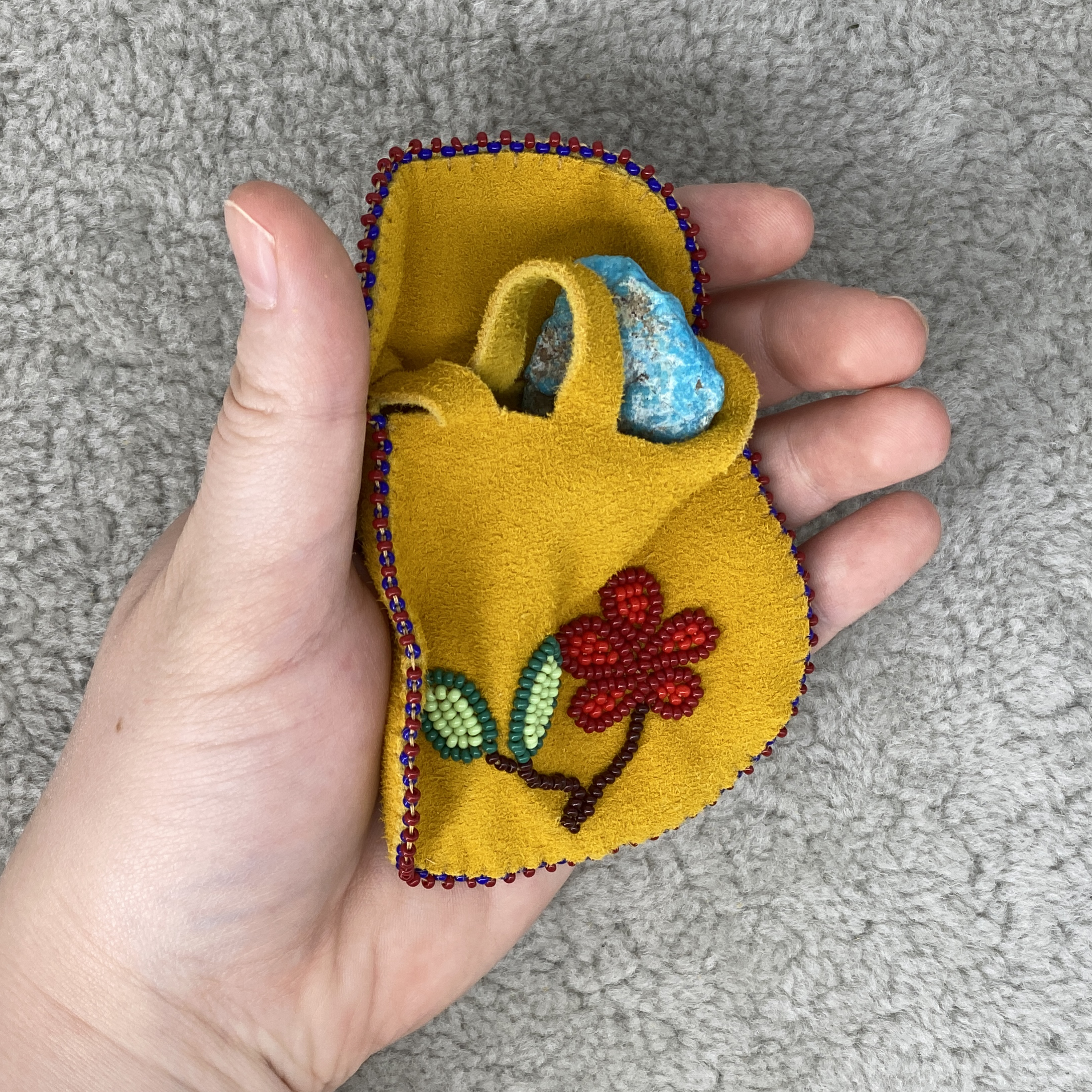How To Make Native American Puzzle Pouches

I was going to publish all of this as a book, but the project has languished for several years now, so enjoy a free half-baked ebook! Download at the end of this post.
Do you know the secret of Native American puzzle pouches? These enchanting little bags have two flaps, but look like they have no opening at all!

My photos reveal the mystery: one side of the pouch can pull away from its flap, and small items can be slipped into it between the thongs. Pull the thongs back up through the flap to securely close the pouch.


The closure is quite secure, so these bags are practical little works of art.
There is remarkably little information available about puzzle pouches. Most existing pouches are antiques found in museums or on auction sites. What I do know is that most appear to have been made by Haudenosaunee (Iroquois) tribes. They are not known to bear any religious significance, and were once produced for the tourist trade.
Acknowledgements
Some links are to archive.org snapshots for long-term stability, but as of this writing these sites are still live on the internet.
The one that started it all for me is Tara Prindle's pattern and instructions on puzzle pouch making. I was hooked after making my first one. I also learned a lot from Gerry Biron's Historic Iroquois and Wabanaki Beadwork.
The Smithsonian National Museum of the American Indian is my most used reference for developing patterns. You get few, if any, results for searching for "puzzle pouch" so you have to flip through the more general bag/pouch category. See this example from the NMAI collection for an idea of where you have to look.
Caveats for the book: As mentioned, this is half-baked so the instructions are not complete. However, the book has extensive photography, so even in places without text instructions you should be able to follow along.
The Book
Download the full PDF book including patterns.
A Photo Guide to Making Native American Puzzle Pouches © 2025 by Heather Athebyne is licensed under Creative Commons Attribution-NonCommercial-ShareAlike 4.0 International.